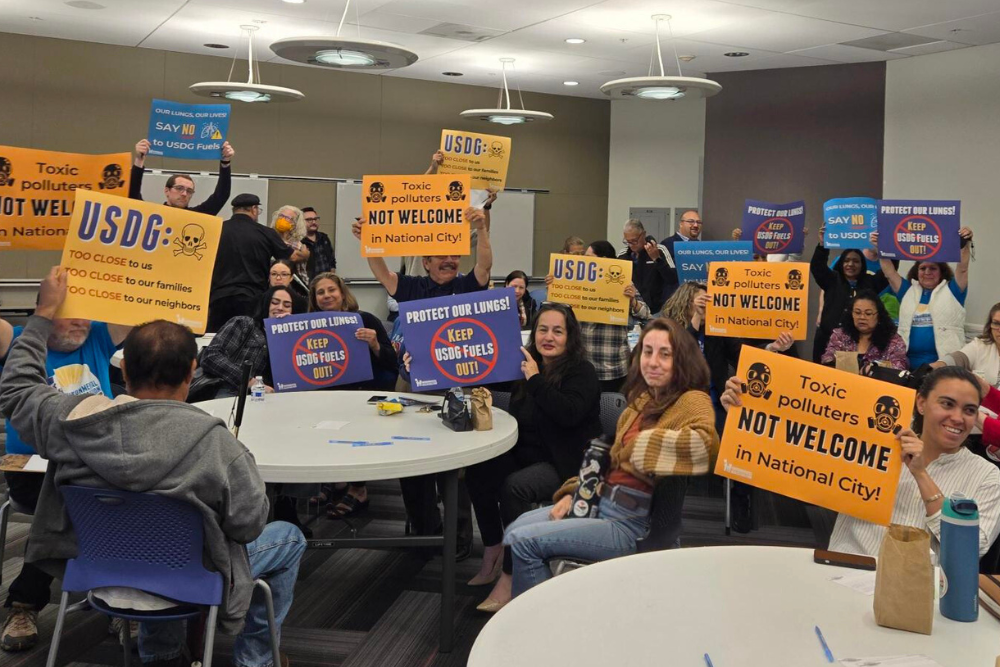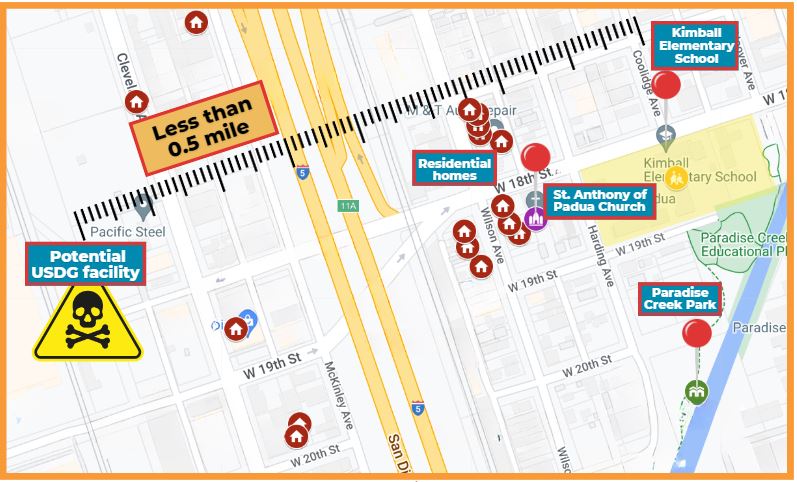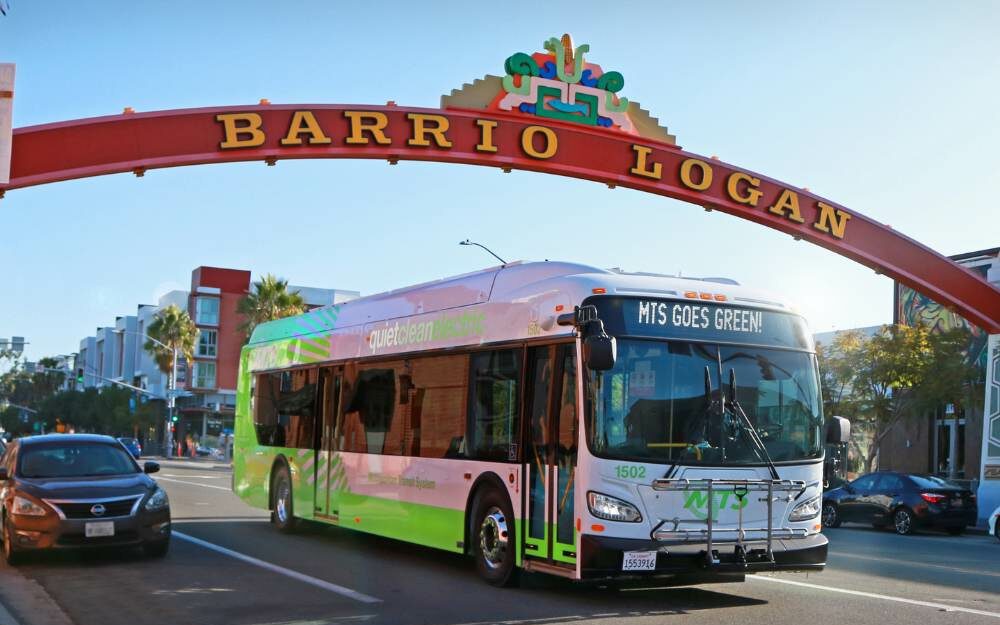
On May 23rd, more than 50 National City residents came together at a scoping meeting to raise their voice against USDG Fuel’s proposed fuel transfer station. A project that would increase pollution in their community.
Thanks to community organizing, the proposed fuel station will undergo an Environmental Impact Report (EIR) to assess the health and environmental hazards the project would have on National City. The first step in the EIR process was the scoping meeting. This was an opportunity for the company to meet the community and help explain the EIR process. Unfortunately, USDG didn’t show up to face the community directly, instead they sent a consultant who was unable to answer some of the residents most crucial questions. For example, what would the impact be if one of the trains or trucks carrying toxic chemicals serviced at their station were to crash or explode?
“I heard comments from the community members that USDG’s absence was disrespectful because they are the ones who want to come to National City. The community is already here defending their environment and the air they breathe,” shared EHC’s National City organizer, Monserrat Hernandez.
Running 24/7 the station would massively increase lung-damaging diesel trucks and train trips. The project would be located less than a mile from homes, Kimball Elementary School, and St. Anthony of Padua Church. The trucks and trains serviced at the station would transport large amounts of hazardous chemicals through our communities increasing the risk of a catastrophic emergency.

What is an Environmental Impact Report?
According to the Los Angeles Public Library, “Environmental Impact Reports (or EIRs) are reports to inform the public and public agency decision-makers of significant environmental effects of proposed projects, identify possible ways to minimize those effects, and describe reasonable alternatives to those projects.”
What are the next steps in the EIR process?
- The City will prepare a draft EIR
- Residents will have 45 days to provide feedback on the EIR
- The City will then publish the EIR
- The Planning Commission will then vote to recommend that the City Council either approves or rejects the project
- The City Council will vote to approve or reject the project




